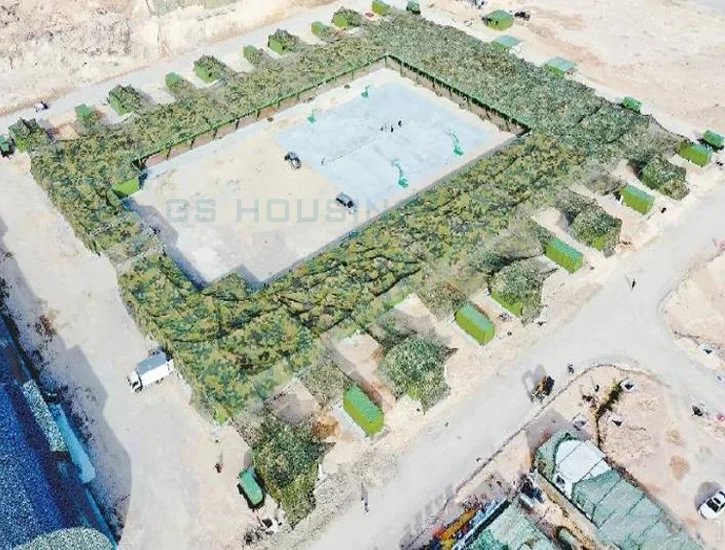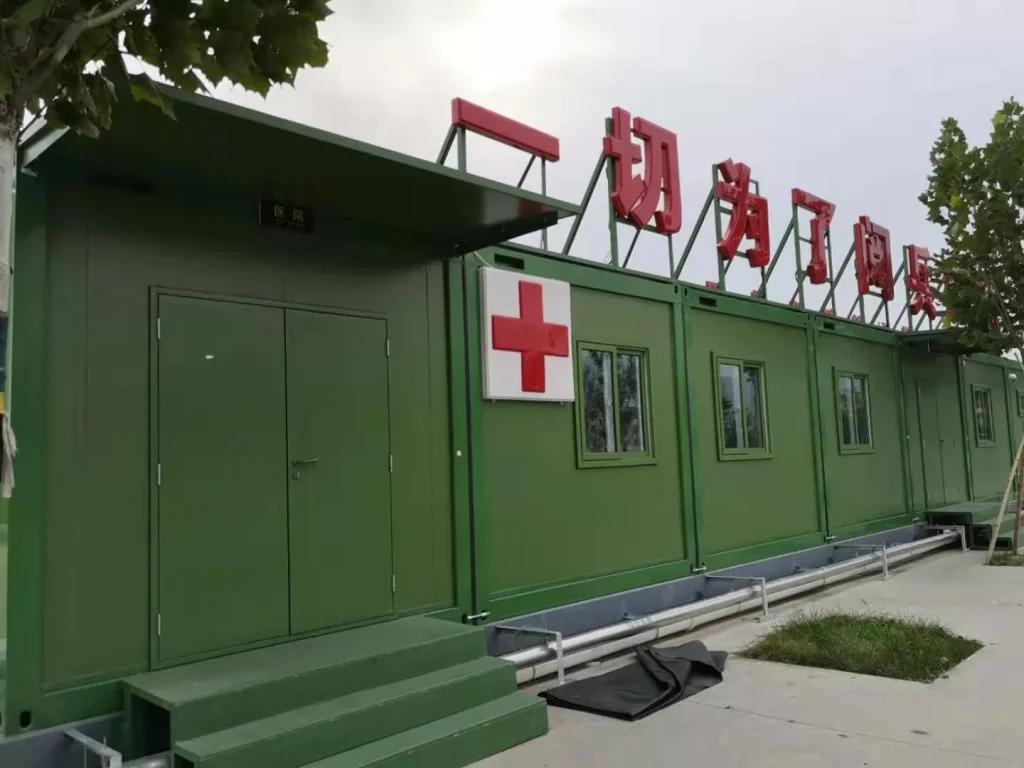Can Modular Construction Reduce Logistical Challenges in Military Infrastructure
Can Modular Construction Reduce Logistical Challenges in Military Infrastructure
Picture building a secure military base in just days, out in a desert, with few supplies and constant threats. Regular construction, with its endless trucks and workers out in the open, often can’t keep up. Construction modulaire flips that whole mess. You build pieces in a safe factory, then snap them together on-site. It’s not just faster—it tackles the biggest logistical headaches military builders face. Let’s dive in.

Logistical Challenges in Military Infrastructure
Common Obstacles in Traditional Military Construction
Military builds need to deliver safe, working bases fast, often in crazy conditions. Old-school methods lean on step-by-step work, tons of on-site workers, and long waits for materials. That leads to delays, busted budgets, and risks—especially in hot zones where speed is super important.
Plus, moving raw materials to far-off or dangerous spots is tricky and pricey. You also need skilled workers on-site, which is tough in places with few people or high risks.
The Impact of Remote and Hostile Environments on Logistics
Building in deserts, mountains, or war zones makes logistics a nightmare. Bad weather or blocked roads slow down material deliveries and mess up schedules. In these spots, cutting time on-site isn’t just about speed—it’s about keeping folks safe.
Here’s where modular construction shines. It moves most work to safe factories, so you rely less on risky field operations and boost safety.
Core Principles and Benefits of Modular Construction
What Defines Modular Construction in a Defense Context
Modular construction is like building a base the way you’d build a car. You make pre-fabricated parts—like integrated houses, walls, panels, columns, stairs, balconies, and whole kitchen and bathroom units—in factories. Then, you snap them together on-site with solid connections. For military use, these can be barracks, command posts, or bathrooms, all built for easy moving and toughness.
This lets planners design bases for specific missions while keeping things consistent worldwide.
Advantages of Prefabrication for Military Applications
Prefabrication brings big wins. You can prep foundations while making modules at the same time, slashing project time. Factory settings mean better quality than unpredictable field work.
MODULAR INTEGRATED CONSTRUCTION also cuts site mess and keeps workers safer by limiting time in dangerous spots during building.
Reducing Deployment Time and Enhancing Mobility
Speed of Installation in Tactical Environments
You need bases that match your mission’s pace. Modular units can go up in hours or days, not weeks or months like traditional builds. They arrive ready to use with little setup—a huge plus for forward bases or emergency shelters.
Plus, Advantages of Modular Integrated Construction mean less worry about weather since most work happens indoors before delivery. That keeps timelines steady, no matter the conditions.
Flexibility and Scalability for Rapid Response Operations
Modular systems are super flexible. Need more beds? Add a unit. Want a mobile command post? Move modules without losing strength or function. You can scale up or down without messing up what’s already there.
This works for all kinds of missions, from quick aid stations to long-term peacekeeping, cutting logistical hassles compared to old-school expansions.
Minimizing Supply Chain Complexity with Modular Solutions
Streamlined Material Handling and Transportation Efficiency
With modular construction, you ship compact, pre-built modules instead of piles of raw materials. This cuts shipping bulk and makes border crossings easier—a big deal when moving across war zones.
Modules are built for intermodal transport by truck, train, or plane, fitting right into military shipping systems.
Reduced On-Site Labor Requirements and Resource Dependency
Since 80–90% of the work happens in factories, you don’t need big crews in risky areas. This saves cash and cuts reliance on local water or power during setup, so you can work solo in tough spots.

Enhancing Standardization and Quality Control
Factory-Controlled Production for Consistent Output
A big perk is consistency. MODULAR INTEGRATED CONSTRUCTION ensures every piece meets high standards before leaving the factory. You’re not stuck with iffy field conditions. You get precise parts made with ISO-certified methods and top-notch tech.
This uniformity helps units work together across missions or regions—key for joint ops with different forces.
Compliance with Military Standards and Specifications
Modular units can be built to meet tough defense rules, like blast resistance, electromagnetic shielding (EMI), HVAC backups for chemical threats, or secure comms. These ensure your base supports both fighting power and long-term strength.
GS Housing’s Modular Solutions for the Defense Sector
Looking for tough, ready-to-go modular solutions for military needs? GS Logement is a solid choice. With years of experience in deserts to high mountains, their products include fully-integrated housing units that balance toughness with easy setup.
Their Flat Pack Container House is a great example: easy-to-ship modules needing little assembly, perfect for temp outposts or semi-permanent bases.
GS Housing’s gear has been used as mobile command centers, troop housing, medical posts, and even field kitchens for big ops—all holding up in harsh conditions like sandstorms or freezing cold.
Strategic Advantages for Long-Term Military Infrastructure Planning
Lifecycle Cost Reduction Through Reusability and Maintenance Efficiency
Unlike traditional builds that wear out fast when moved or exposed, modular units are made for reuse across missions. Their tough build cuts upkeep costs and lasts longer, saving money over time.
Maintenance is easy with standard parts and plug-and-play setups. You can swap pieces fast without fancy tools—a big win far from supply hubs.
Integration with Modern Technologies for Smart Bases
Modular designs aren’t just static. They work with IoT sensors for energy tracking, biometric locks for security, or solar panels for off-grid power. These make them perfect for smart bases focused on green tech and automation.
Recommendations for Implementing Modular Construction in Military Projects
Aligning Modular Design with Mission Objectives
To get the most from modular setups, match designs to your goals: fast setup for crises or scalability for peacekeeping. Pick layouts with multi-use potential to keep things flexible.
Early planning should use simulations to test how modules fit in different setups—like base layouts or traffic flow—to avoid snags during real missions.
Collaborating with Proven Providers like GS Housing for Optimized Results
Team up with experts like GS Housing. They offer not just products but planning help from design to setup and long-term support. Their real-world experience means your bases will work as planned, no matter the conditions.
FAQ (questions fréquentes)
Q1: How does modular construction improve military base setup times?
A: Modular units are pre-built off-site, so they’re ready to set up fast. You can have a base in days, not weeks, which is huge for emergencies or combat zones.
Q2: Are modular buildings tough enough for harsh military environments?
A: Yup! They’re designed for extreme weather—like desert heat or Arctic cold—and built to handle wind or quakes based on where you’re at.
Q3: Can modular systems support modern military tech?
A: Totally! They fit with smart tech like IoT monitors, solar power, secure comms, and more, making them ready for future defense needs.



